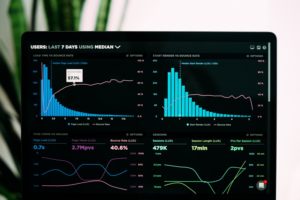A New Word for a New Trend
Lean Management originally refers to principles and methods that were developed in the private sector to target manufacturing processes and optimizing them by reducing wastes and improve efficiency. Recently, Lean methods have been applied to a wide range of government organizations too, ranging from our Belgian institutions, to all branches of the U.S. Armed Forces and the United States Environmental Protection Agency. In this article we are not going to speak about a Belgian institutions but about American agencies that reflect very well this new Lean Government trend.
Why Lean Government?
Lean Government focuses on governing and serving citizens with respect and continuously improving service delivery by cutting out “waste” and “inefficiency” in processes. By identifying and eliminating unnecessary process steps and activities, government agencies better understand how their processes work, help them make adjustments that optimize desired outcomes and ensure that processes function smoothly and consistently.
This, at the end, not only allows staff to focus time and resources on higher value activities but also results in better services overall, engaged civil servants as well as more value for tax-supported programs and services.
Lean Government in 5 Points
Lean approaches typically have the 5 following characteristics:
- Take a customer service perspective that seeks to optimize value delivered to the public, the regulated community, and/or other stakeholders;
- Involve employees and external stakeholders in continual improvements and problem-solving activities;
- Deploy a rapid continuous improvement framework that emphasizes implementation over prolonged planning;
- Seek to reduce the complexity of processes and the variation in process outputs;
- Use performance metrics and visual controls to provide rapid feedback to improve real-time decision-making and problem-solving;
- Approach improvement activities using systems thinking.
Root causes of Lean wastes
Lean helped organizations such as the United States Environmental Protection Agency improve the speed and quality of its processes by getting rid of unnecessary activity such as document errors, extra process steps, and waiting time.
What are all these “waste” caused by? Here are some examples:
- Defects: Data errors, missing info, errors in documents, confusing instructions or requirements, typos
- Overproduction: Unneeded reports and copies, excess e-mails messages, performing unrequested work
- Waiting: Time for approval cycles, waiting for information, decisions, or for people in meetings
- Not Utilized/Underutilized Resources and Talents: Narrowly defined jobs and expectations, lack of teamwork, poor management
- Transportation: Report routing, transportation of documents, document storage
- Inventory: Backlog of work permits and plan approvals, excess materials and information, obsolete databases, files, and folders
- Motion: Trips to printers and copiers, unnecessary movement to find files or supplies, travel to meetings
- Excess Processing: Unnecessary process steps, too many signature levels, unclear job descriptions
What were the results of Lean Government thinking ?
EPA looked for ways to improve Agency performance by dramatically improving the quality, transparency, and speed of all processes. Using Lean helped redesign the agency’s work, create new capacities and skills, and increased the organization’s ability to better serve its stakeholders. The results helped free staff time to focus on higher-value activities that are more directly linked to environmental protection.
Other benefits included:
- Better environmental results
- Superior customer service
- Reduced process complexity
- Enhanced process speed
- High quality products and services
- Improved staff morale
- Increased sense of staff empowerment
- Better use of resources on higher value activities and services
Your Take Away:
Following transformation strategies successfully implemented in the private sector, Lean thinking was imported into governmental organizations too under the name of “Lean Government”. The purpose was to identify the causes of inefficiencies, reduce wastes and apply the adequate remedies. Inspired by the Lean method, a lot of governmental organizations succeeded in improving drastically quality, transparency, and speed in all their processes.
Do not miss our next article! We will focus on Belgian Government to know if it is ready or not for Lean thinking.









